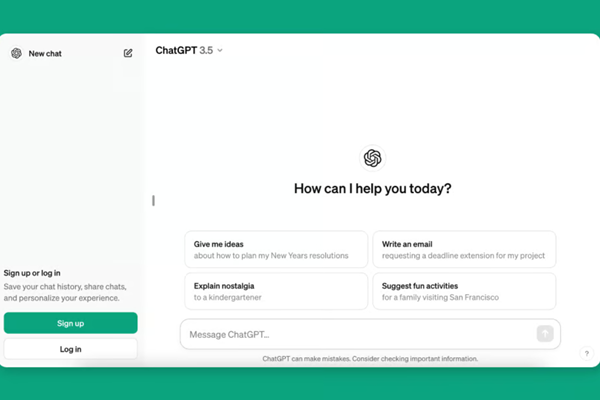ChatGPT No Longer Requires Log-In as OpenAI Tries to Broaden Generative AI Chatbot User Base

ChatGPT no longer requires users to create an account and sign in to access the generative AI chatbot. OpenAI is looking to increase ChatGPT’s user numbers by removing the barrier and getting more people to try it who may be interested but were reluctant to create an account.
ChatGPT Casual
Those who don’t have an account are able to use the free version of ChatGPT, which employs OpenAI’s GPT-3.5 large language model. The user can return to the chatbot, though the AI won’t save any information between these anonymous sessions. That said, OpenAI noted that content provided to ChatGPT may be used to improve and train their AI models for all users. However, users will have the option to turn off this data usage through their settings, regardless of whether they create an account or not. The company also stated that it has introduced additional content filters and safeguards for the open access version, such as blocking certain types of prompts and outputs across a wider range of categories.
“It’s core to our mission to make tools like ChatGPT broadly available so that people can experience the benefits of AI. More than 100 million people across 185 countries use ChatGPT weekly to learn something new, find creative inspiration, and get answers to their questions,” OpenAI wrote in a blog post announcing the option. “For anyone that has been curious about AI’s potential but didn’t want to go through the steps to set-up an account, start using ChatGPT today.”
Despite highlighting the new option, OpenAI did make a point of mentioning the benefits of an account interms of extra features and functions. And there have been quite a few rolling out every month or so. Most recently, that was the Real Aloud feature which creates an audio performance of ChatGPT’s answers in 37 languages and five voices. ChatGPT also recently incorporated a memory setting to tailor how it interacts with users based on previous conversations. Recalling preferences and personal information reduces the need for repetition by the user at the beginning of every conversation. That followed the ability to invoke custom GPTs during a conversation, chat archiving, and the release of new models designed to make ChatGPT work harder. All of this builds on earlier features like online search and multimodal options that allow for verbal conversations and enable the AI to process images in addition to text as well as document and PDF analysis.
Follow @voicebotaiFollow @erichschwartz
ChatGPT Can ‘Read Aloud’ Responses in 5 Voices and 37 Languages









